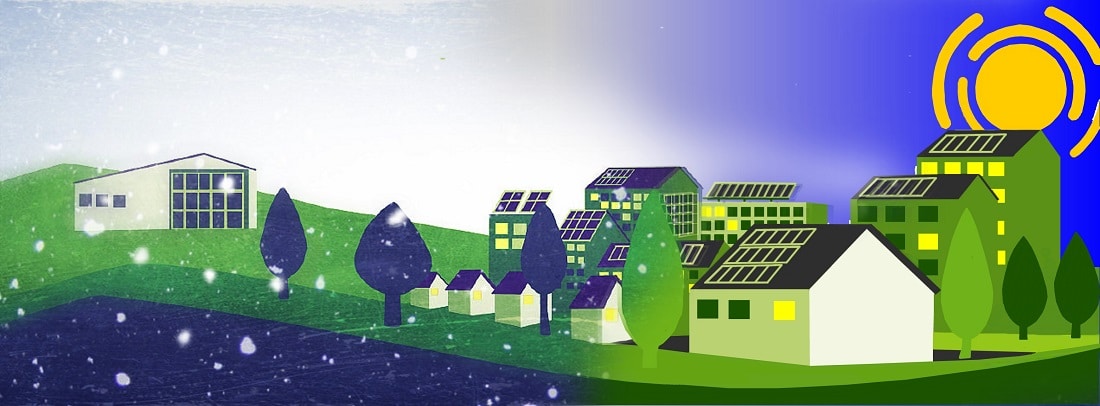Optimising Heat Pump technology with the PV/PCM

Integrated innovations from leading specialists customise efficiency measures making the buildings of the future more sustainable and comfortable. The Mayo and Ferrara demonstration deployments show how the project’s technologies enable new sustainability options for both the rural and urban settings.

Flat Panel Ground Source Heat Exchangers (GSHX) These were developed in the University of Ferrara and are the ideal complement to the high-density energy efficiency of the PVT panels. Unlike traditional ground source heat exchangers, they are concentrated in trenches and so require much less site area to achieve the same level of efficiency through exchanger surface area. They are embedded in trenches surrounded by PCMs to increase the efficiency of the heat exchange.
The performance of ground heat exchangers (GHXs) is strongly dependent on the thermal properties of the backfilling materials used. Ideally, these should have a high thermal conductivity as well as a significant energy storage capacity. For this reason, we considered that phase change materials (PCMs) could be successfully employed to improve thermal retention. Against this background, experimental research was carried out at the TekneHub Laboratory of the University of Ferrara (Italy).
Our experiments found that GHX3 enhanced with macro-encapsulated hydrated salts as PCMs shows a much higher UTES than GHX2, integrated with paraffin granules mixed with sand, and obviously if compared to GHX1 backfilled only with sand.
PCM Radiant Floors: The floor of the community hall in both the Mayo and Ferrara demonstration sites were upgraded with a heating loop connected to an Air Source heat exchanger. Thin IceTM PCMs supplied by Phase Change Materials Ltd have been co-installed with the heating loop to increase the efficiency of the radiance in an application which was devised and tested by Ulster University.
Ulster University’s research into the effectiveness of incorporating ThinICETM Phase Change Material containing into the radiant floor shows that the PCM conserves heat for longer as well as diffusing it better to achieve a 37% improvement in performance over the same radiant floor without PCMs. This radiant floor system has now been installed in the demonstration building in Mayo.
